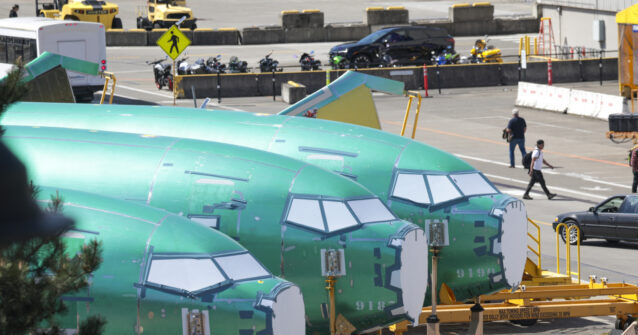Orders for long-lasting manufactured goods jumped in March, far exceeding expectations and building on prior gains, according to data released Thursday by the U.S. Census Bureau.
New orders for durable goods rose 9.2 percent to a seasonally adjusted $315.7 billion, after a 0.9 percent increase in February. Economists had forecast a more modest 1.4 percent rise. The gain was powered by a 27.0 percent surge in transportation equipment, led by a 139.0 percent jump in commercial aircraft orders, which alone accounted for nearly the entire headline increase.
Excluding transportation, orders were flat, compared with a 0.7 percent gain in February and expectations for a 0.3 percent increase. Core capital goods orders—nondefense capital goods excluding aircraft, a closely watched proxy for private-sector investment—rose just 0.1 percent, also slower than February’s 0.7 percent and below the forecasted 0.3 percent.
Orders for machinery rose 0.1 percent, down from a 0.8 percent increase the prior month, while shipments climbed 0.5 percent. Computers and related products saw orders fall 2.9 percent, following a 0.9 percent gain in February. Motor vehicles and parts orders rose 2.3 percent, mirroring the prior month’s pace. Primary metals orders increased 0.7 percent, also slowing from February’s 1.3 percent gain.
Shipments of all durable goods increased 0.1 percent in March after rising 1.3 percent in February. Unfilled orders climbed 2.0 percent, compared with just 0.1 percent the prior month, with transportation accounting for most of the increase.
Shipments of core capital goods—used to calculate the equipment investment component of GDP—rose modestly in March, suggesting that business investment may be rebounding in the first quarter after contracting late last year.
While many analysts and media reports have described the surge in orders as front-loading ahead of tariff announcements in early April, inventories of durable goods rose only 0.1 percent, suggesting that companies were not massively stockpiling goods in anticipation of higher import costs. Inventories of nondefense capital goods rose 0.3 percent, and total capital goods inventories increased 0.4 percent—modest gains, but consistent with a cautious restocking environment.
Durable goods orders are a considered a leading indicator of economic strength. When businesses and consumers commit to purchases of long-lived goods—like machinery, vehicles, and appliances—they’re expressing confidence in future income and stability. These aren’t impulse buys. They’re bets on the future. A sustained rise in durable goods orders isn’t just a sign that factories are busier—it’s a signal that economic momentum is building.
More comprehensive data, including nondurable goods, will be released May 2.
Read the full article here
